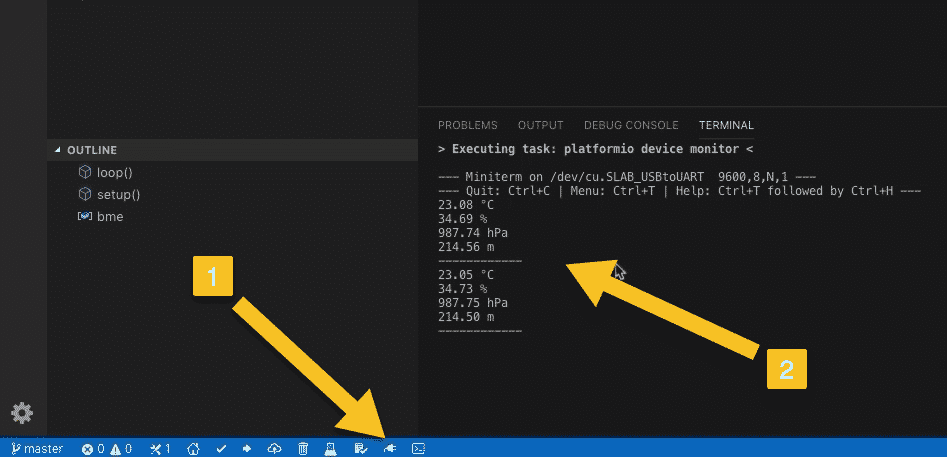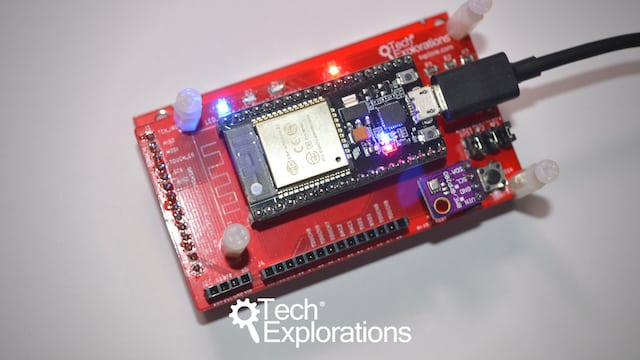In this article, I’ll show you how to test the application after the work you did in up to now (please check the previous article if necessary).
I remind you that at this point, we have an application that consists of four files:
- main.cpp
- sensor_readings.cpp
- sensor_readings.h
- setting.h
In the previous article, we compiled the program successfully. Now, let’s test it on the target device.
Connect your ESP32 to your computer. Click on the compile and upload button.
In the previous article, we only changed the internal organization of the application, not its functionality. Therefore, I expect to see the same output on the device as in the previous test.
You may need to hold on the boot button to put the ESP32 to upload mode if the first upload attempt does not succeed.
Once the upload is finished, open the serial port (1, see image below).
You should see the sensor values rolling through (2).
It means that the application with its new organization and architecture works as expected.
Awesome
🙂
Let's move on to the next lecture now where we'll spend a little bit more time playing around with the Git repository.



